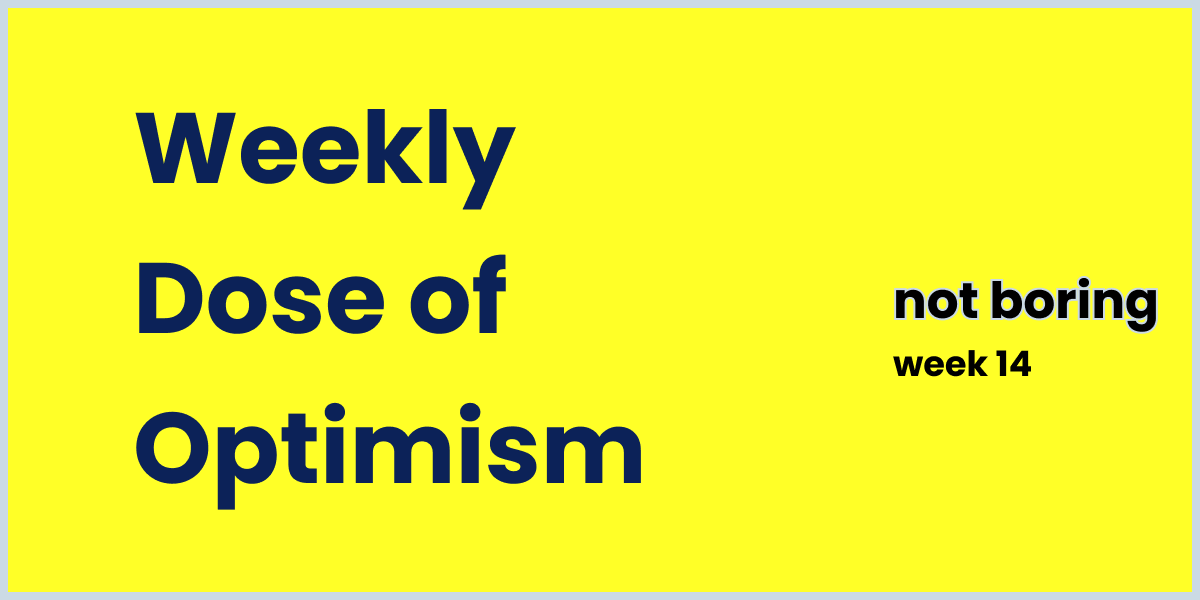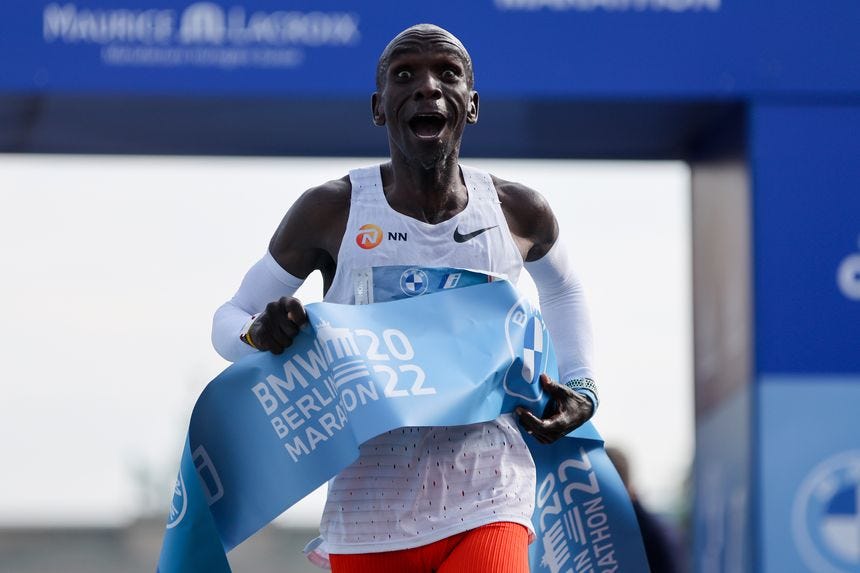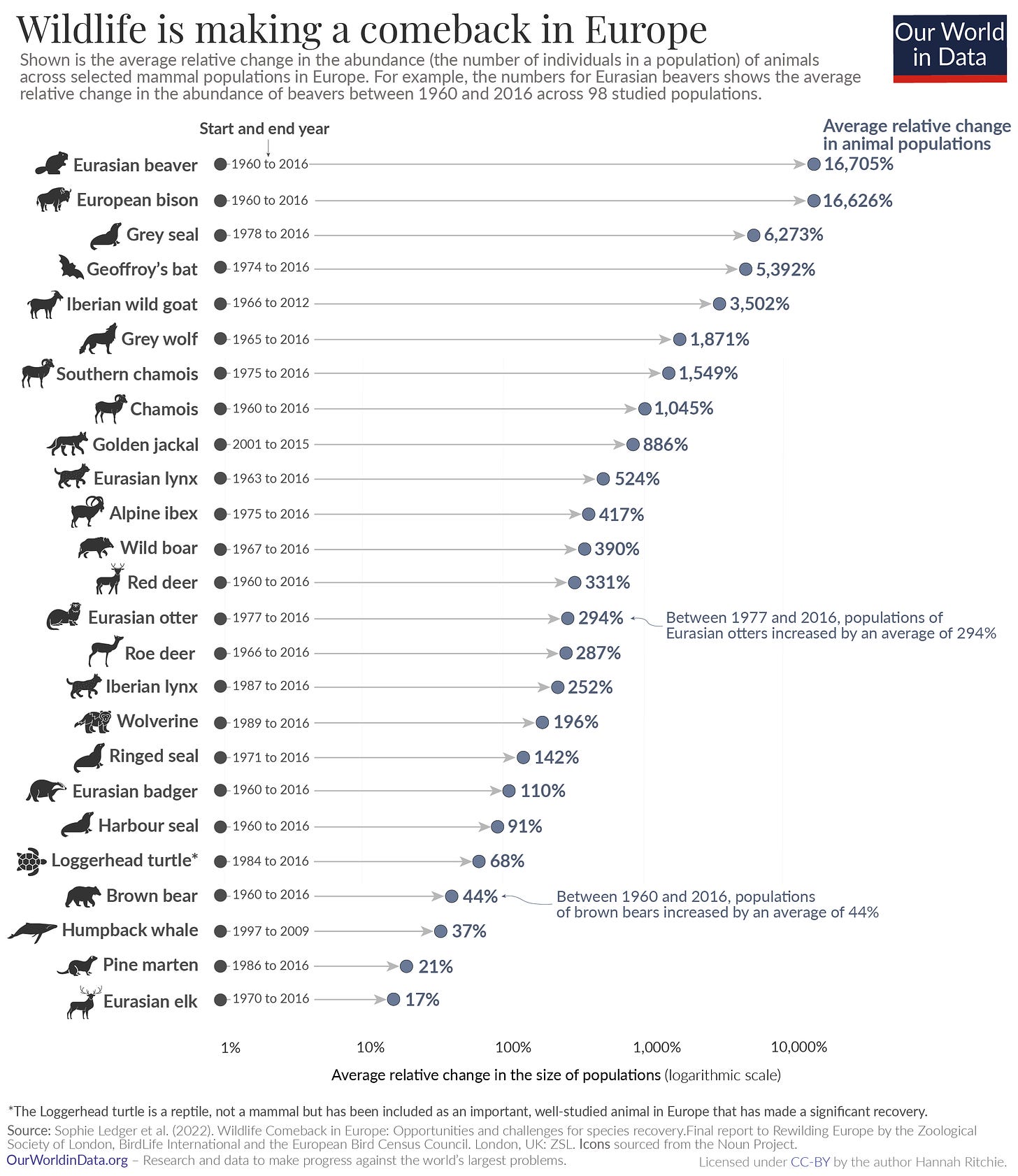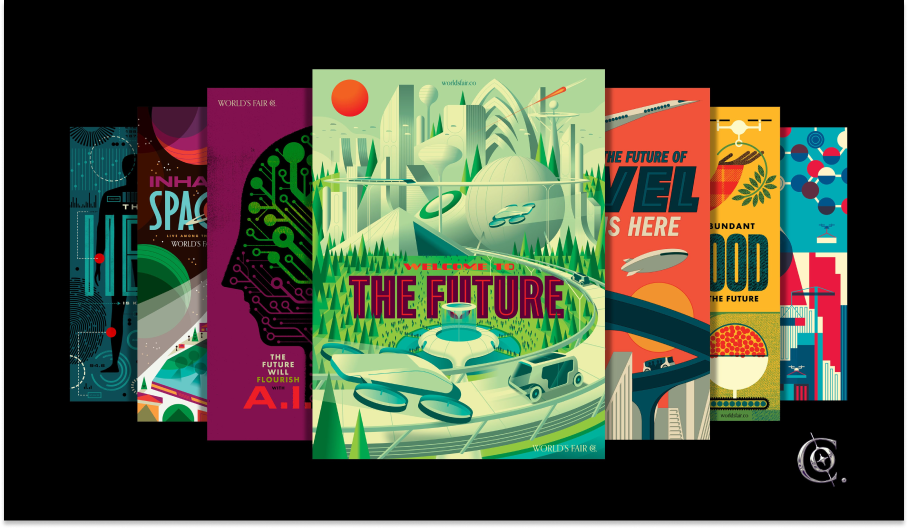

Weekly Dose of Optimism #14
source link: https://www.notboring.co/p/weekly-dose-of-optimism-14
Go to the source link to view the article. You can view the picture content, updated content and better typesetting reading experience. If the link is broken, please click the button below to view the snapshot at that time.
Weekly Dose of Optimism #14
Progress and Optimism, Marathon World Records, Mammal Comebacks, DART, a Nuclear Enchanted Notebook, and The World's Fair Co.
Come for the Optimism, stay for the in-depth analyses of tech companies and trends:
Hi friends 👋,
Happy Friday and welcome to our 14th Weekly Dose of Optimism. If you’re interested in how Not Boring has grown over the past few years, we did a Twitter thread (sorry!) on the topic.
Long story short:
we’re still growing surprisingly fast despite no paid marketing
you are all still engaging with the content we put out despite the world opening up (thank you!)
you are each (or at least in aggregate) very impressive people
advertisers still want to reach you in an authentic and effective way, and sponsoring Not Boring is a good way to do that
If you’re interested in more of the specifics and numbers, check out the thread (again, sorry, we hate ourselves too sometimes) below:
Now, let’s get to it.
(1) 🎧 We Know Shockingly Little About What Makes Humanity Prosper 🎧
From The Ezra Klein Show
We all know Patrick Collison, the charmingly Irish and intellectual co-founder and CEO of Stripe, the fourth most valuable privately held “startup” in the world. He’s lesser known for, but perhaps more influential in, the co-creation and support of Progress Studies. The discipline, which was essentially written into existence by Collison and economist Tyler Cowen in this Atlantic piece titled, “We Need a New Science of Progress,” studies the history, nature, and characteristics of human progress. The key insight of Progress Studies is that progress is more fragile and uncertain than it appears —and, given progress’ general importance in…everything…, we should probably study it more closely.
Collison’s influence in this sphere — thanks to his ~$10B net worth, prestige within engineering circles, actual intellectual contributions, and novel funding approach — probably outranks just about anyone else in the world. This whole podcast is worth a listen (or transcript worth reading) because it’s likely Collison’s most robust articulation of his worldview.
If I had to sum up that worldview in a sentence: optimistic that we can continue to accelerate the rate of progress, if we understand its causes and intentionally create environments in which it can thrive.
BONUS: AN END TO DOOMERISM
Hannah Ritchie for Big Think
Speaking of Progress Studies and Optimism, Hannah Ritchie—the head of Research at Our World in Data—just came out as an optimist. Not a blind optimist, though. Hannah is too data-driven for that. She subscribes to a more Not Boringian definition of optimism: “hopefulness and confidence about the future or the success of something.” Ritchie’s own optimistic worldview, I think, aligns quite closely with Collison’s, and I know, pretty much 100% aligns with my own which I laid out in Optimism.
(2) Eliud Kipchoge Lowers His Own Marathon World Record by Half a Minute
Rachel Bachman for The Wall Street Journal
Speaking of progress, history’s fastest marathon runner just smashed his own world record, clocking an official 2 hours, 1 minute, 9 seconds — shaving 30 seconds off his 2018 time. Eliud Kipchoge (great profile in The Irish Examiner) is most widely known for being the first runner to run 26.2 miles in under 2 hours, though that’s not an official world record because the event was not an open competition, but rather, was designed specifically for the breakthrough.
Like the 4 minute mile, the 2 hour marathon is an almost mythical threshold that seems both physically and mentally unbreakable. But the 4 minute mile falling was one of the all-time great proof points for the idea that when one person shows something is possible, all of the sudden, a lot of other people see that it’s possible. Kipchoge, or some other future marathon runner, breaking the 2 hour marathon would be a similar feat. Our guess is that when someone eventually breaks the barrier, a bunch of people are going to start running sub-2 in short order. A good reminder that impossible things often aren’t.
(3) Wild mammals are making a comeback in Europe thanks to conservation efforts
Hannah Ritchie for Our World in Data
What these promising trends show is that the recovery of wildlife is possible. Improvements in agricultural productivity not only halted the expansion of agriculture, but eventually reversed it. Farmland was given back to nature. Importantly, Europe achieved this while producing more food at the same time.
Not only are we making progress, we (and by “we” I mean humans and animals) are making comebacks! The same Hannah Ritchie from the bonus article above, shows how large mammals are once again flourishing in Europe thanks to conservation efforts. Take the European bison, for example: nearly driven to extinction in the early 20th century due to hunting and habitat loss, there are now nearly 10,000 in the wild.
Turns out, the easiest way to prevent animal extinction is to…stop intentionally killing them. But beyond a decline in hunting, conservation, reintroduction, and wildlife protections programs have allowed these once endangered species to flourish again.
(4) NASA crashes DART spacecraft into asteroid in world's 1st planetary defense test
Tariq Malik for Space.com
If we humans are progressing and animals are making a comeback, it’d be a damn shame if some asteroid plummeted out of space into earth causing serious environmental damage, mass extinction, and generally devastating civilization beyond repair — wouldn’t it?
Fear not — we have a plan: smashing miniature spacecraft into oncoming asteroids. NASA’s DART Mission’s (Google it, the search results page is fun!) objective is to test methods of planetary defense against near-Earth objects, like asteroids and other various space objects. Essentially, how can we deflect oncoming objects off their trajectory such that they miss crashing into earth.
This first mission seems to have been a success, but to be fair, the stakes were relatively low: even if the mission failed, the asteroid was never destined for earth. As an aside, nothing gets me pumped up like a bunch of NASA nerds cheering, high-fiving, and fisting-pumping over some grainy, hard-to-understand-what’s-actually-going-on video — it means we still have people out there that are truly jazzed up about space. We need more of those folks.
(5) The Future History of the Nuclear Renaissance With Isabelle Boemeke
By Isabelle Boemke for Palladium
In “The Enchanted Notebook” we wrote that one way to create the future is to imagine it, write it down, and reverse engineer how we got there. Isabelle Boemke does just that in this piece: imagine a world 30 years in the future in which a nuclear renaissance has made energy cheap and abundant, detail exactly what that world looks like, and reverse engineer what must’ve happened to get there. Here’s how Boemke breaks it down:
Catalyst 1: War between Russia and Ukraine makes West remember (once again) that energy independence is important.
Catalyst 2: As energy abundance is embraced, governments realize they really only have two options: double-down on coal or embrace nuclear.
Catalyst 3: It becomes politically popular to embrace coal — the hypocrisy of the 20th century around nuclear becomes clear, first to activists, then to the general population.
Catalysts 4: Governments that embrace nuclear early and hard are put in a position of leadership.
Who knows exactly how the future will play out, but this seems like a relatively believable path — and one worth trying to re-create in the real world. We’re already seeing some of these catalysts play out and nuclear momentum is starting to leak out of the activist circles into lives of everyday folks that just want cleaner, cheaper, and more abundant energy.
Bonus: The World’s Fair Co. Posters
Speaking of painting a picture of the future you want to see, The World’s Fair Co., released posters in collaboration with Invisible Creature (the folks behind the NASA Visions posters) that depict the future of different sectors of the economy: space, AI, crypto, food, oceans, clean energy, health, robotics, cities, travel, and science.
The World’s Fair Co. is one of our favorite projects here at Not Boring. As the name suggests, founder Cam Wiese & co are bringing back The World’s Fair in order to bring an optimistic vision of the future to life. At the Fair, “you’ll see and interact with the technologies of today that are shaping the world of tomorrow.” It’s a crazily ambitious project — the kind I’m thrilled to see people pursuing — and I can’t wait to attend towards the end of the decade when they pull it off.
You can check out the full gallery (and buy prints of the posters, I picked up “Welcome to the Future”) here, and check out the whole shiny new site here.
I’ll leave you with this quote from The World’s Fair Co.’s Mission Statement:
If we choose to aim high and build, future generations will live in a world of abundance, progress, human flourishing, and beauty.
To achieve this vision, we must first create a culture that believes our future is worth fighting for. We must tell stories about the future that empower us — stories of a world that we're excited to live in and are inspired to build.
Humans are pulling off some pretty incredible things every week. Whenever you find examples, share them here and we’ll feature some in the newsletter.
That’s all for this week — I’ll be back in your inbox right before 9am EST on Monday morning. Enjoy the weekend.
Thanks for reading,
Packy
Recommend
About Joyk
Aggregate valuable and interesting links.
Joyk means Joy of geeK




